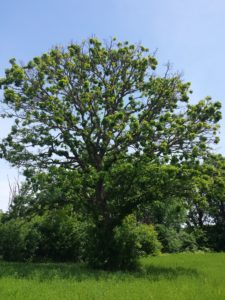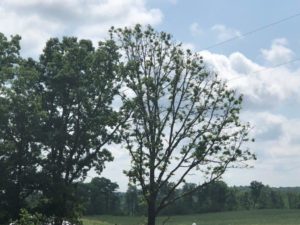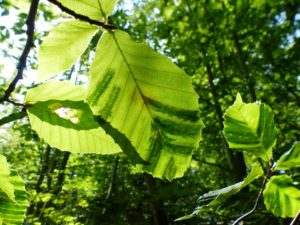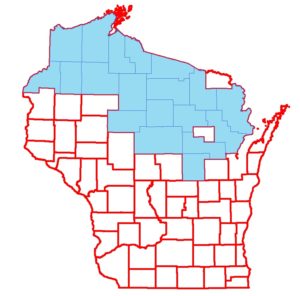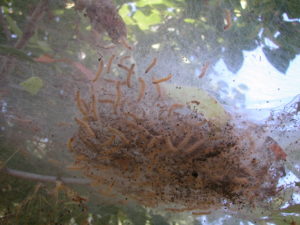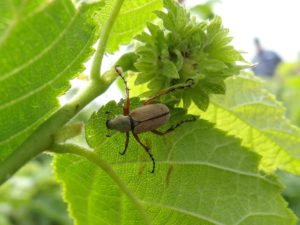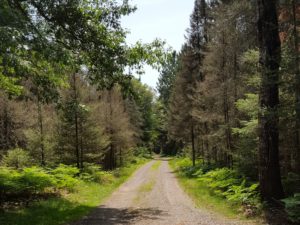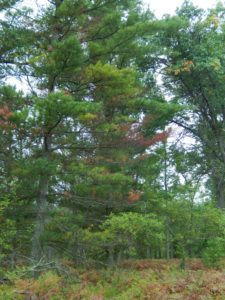By Linda Williams, forest health specialist, Woodruff. Linda.Williams@wisconsin.gov; 920-360-0665
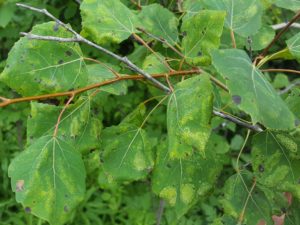
The tops of aspen leaves will appear off-colored when aspen blotch miner caterpillars feed within. Photo: Linda Williams
If you’ve noticed aspen trees seem a little pale lately, you are probably seeing damage from aspen blotch miner caterpillars. Typically, these leaf-mining insects only affect young aspen trees, but this year I’ve found uniform damage on bigger trees with large crowns. Symptoms include thinned crowns, off-color leaves with blisters on their undersides, and, later in the summer, curling and browning leaves. Tiny caterpillars spend their entire lives feeding within the leaf; they then pupate into the tunneled-out areas. Moths emerge in August and spend the winter in protected places.
I have reported this insect each year since 2012 in northeastern Wisconsin. This year, there were aspen leaf blotch miners in Marinette, Florence, Forest, Oneida, and Vilas counties, which is similar to where they were found last year. Although defoliation can be severe, aspen trees usually tolerate the situation well. Many affected aspen trees will send out new leaves after feeding by caterpillars ends. Although damage may appear severe, the effects on the trees’ overall health seems negligible.

